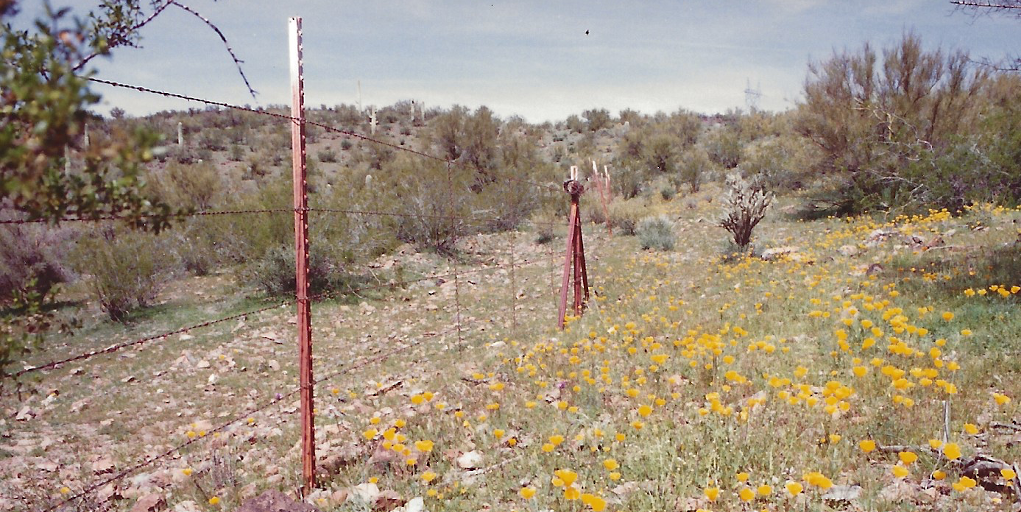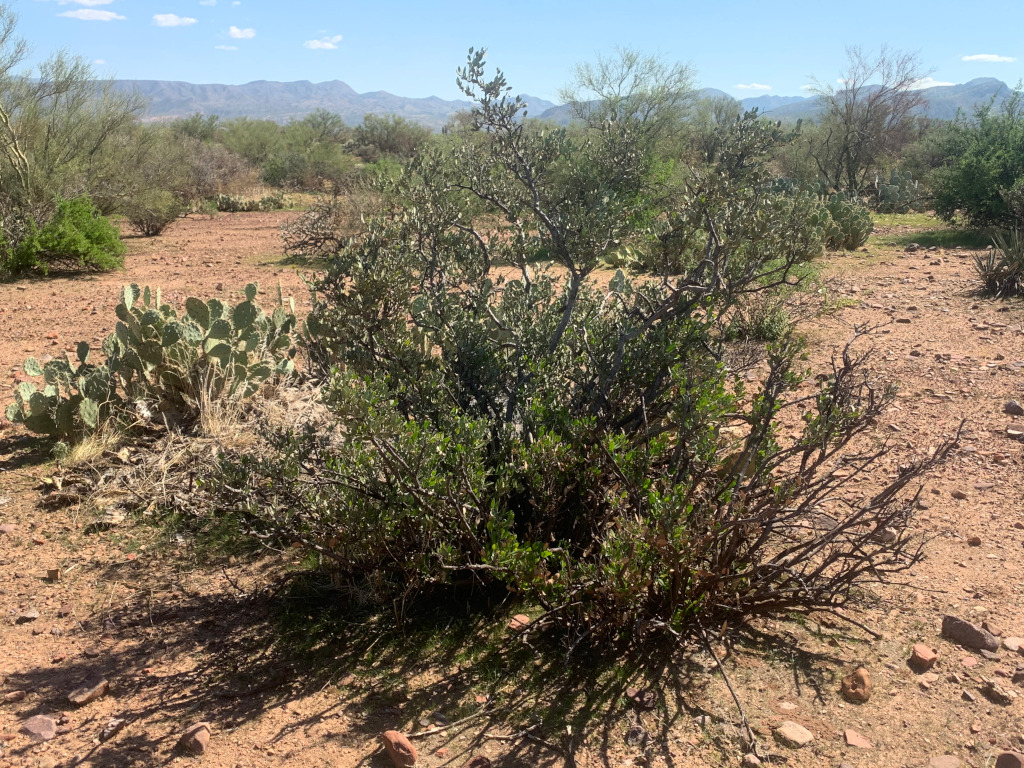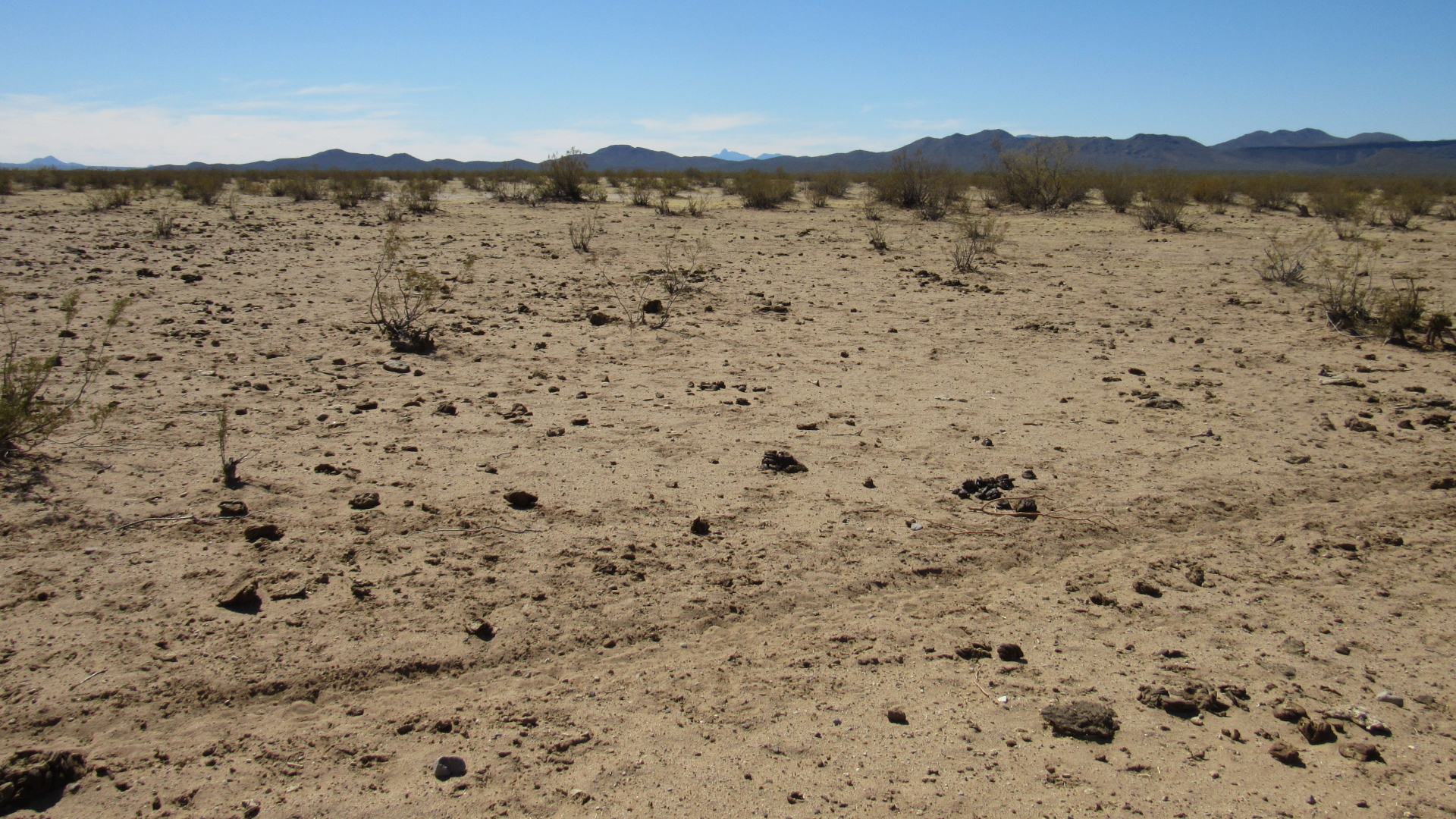Did you know that the federal agencies charged with managing our public lands permit livestock grazing in desert ecosystems?
In Arizona, for instance, where the predominant ecosystem is desert, more than 87% percent of the 14.2 million acres managed by the U.S. Department of the Interior’s Bureau of Land Management (BLM) are permitted for livestock grazing, while the U.S. Department of Agriculture’s Forest Service permits grazing on more than 67% of the 11.2 million acres they manage in the state’s national forests. Arizona’s Tonto, Prescott and Coronado National Forests include hundreds of thousands of acres of hot Sonoran Desert. On the Tonto National Forest, for example, there are 791,284 acres of Sonoran Desert.
Almost all of these public land ranching operations graze cattle, which require significant amounts of vegetation and surface water to survive. Since deserts receive less than 10 inches of rain per year, it’s obvious that permitting livestock grazing in the desert is a dumb idea. In 1991 the U.S. Congress’s Government Accountability Office (GAO) agreed when it issued a report (GAO/RCED-92-12) that analyzed the BLM’s permitting of livestock grazing in the desert. The GAO concluded that, “the lands we visited provided enough evidence of the high environmental risk and low economic benefit associated with livestock grazing in America’s hot deserts for us to conclude that the program as currently conducted merits reconsideration.”
This conclusion was reinforced when the Nature Conservancy of Arizona released a report in 2005 titled The Impacts of Livestock Grazing in the Sonoran Desert: A Literature Review and Synthesis. The authors suggested that the only livestock grazing that might make sense in the desert is the BLM’s practice of issuing temporary, ephemeral grazing permits after wet winters. “For most of the Sonoran Desert, as described in this report, only grazing in response to winter rains may be feasible,” they said.
Permitting cattle to graze in the desert can cause a lot of damage, especially during the hot summers and droughts. If the animals have access to riparian areas, they can destroy them by turning them into turd-filled mud holes. Cattle also disturb desert riparian areas in ways that help spread invasive tamarisk trees.
Cattle can also denude the desert uplands of herbaceous plants, which they prefer to eat, so they are forced to eat brush, mesquite tree seed pods, and low-hanging tree branches to try and avoid starvation (Smith 1993). In fact, research (Rosiere 1975) has shown that cattle grazing the Southwest’s deserts don’t get more than 50% of their forage from perennial desert grasses. This thorough consumption of the herbaceous plants also means that few of these plants are able to produce seeds, and they become scarce, or are locally extirpated. Furthermore, the local seed-eating wildlife suffer.

But some Arizona ranchers actually prefer desert grazing allotments on public land. They call it brush or browse grazing. A rancher explained it to me this way, “When it doesn’t rain the grass will dry up and you’re out of business, but the brush will always be there.”
This type of ranching has long been pervasive in the desert areas of the Tonto National Forest. In 1930, for example, the Forest Service issued a memo of concern regarding the overgrazing of desert browse plants in the forests of its southwestern region. It warned that conditions were so bad on the Tonto that it might be necessary to eliminate grazing in allotments located along the lower Salt River. The Tonto has used a maximum utilization level of 50% of current annual growth on browse species by cattle. But by the time that use level is achieved, the cattle have already eaten almost every palatable plant on the ground. This increases erosion and results in much less food and cover for desert wildlife.

For example, research (Krausman 1996) has shown that livestock grazing in the desert degrades desert mule deer habitat. Cattle and mule deer usually have little dietary overlap, as cattle prefer herbaceous vegetation and deer prefer woody browse. But the lack of herbaceous plants in the desert forces the cattle to compete with desert mule deer for browse. This competition is increased during the hot summers and droughts, and the competition is made worse when new livestock waters are built which allow cattle to say on the land longer during dry times. The USDA’s Livestock Forage Disaster Program also contributes to this problem by disbursing drought compensation payments to ranchers that use desert lands.

Desert grazing is especially bad if the rancher is allowed to implement a junk-science-based holistic resource management (HRM) grazing system, as they have high forage utilization rates – which denude the land until the next rare rain.
Desert grazing can also permanently damage fragile desert soils by destroying their protective biocrusts, leading to killer dust storms. In Arizona’s Sonoran Desert, cattle facilitate the spread of exotic grass species like buffelgrass (Pennisetum ciliare) and red brome (Bromus rubens) which create bigger wildfires in an ecosystem that’s only adapted to small fires, thus threatening the survival of native desert plant species, including the iconic saguaro cactus.
As you may suspect, the multiple use doctrine under which our public lands are managed requires these federal agencies to determine the suitability of various land uses, including grazing, and only allow those uses that are in the interests of the general public. But because of political pressure from ranchers, these regulations have been traditionally ignored when it comes to livestock grazing.
A good example is the story of cattle grazing on the Arizona BLM’s Sonoran Desert National Monument. In 2001 President Bill Clinton issued a proclamation under the Antiquities Act to to create the monument on about 487,000 acres of existing BLM land. It specified that existing grazing permits on land within the monument south of Interstate 8 would not be renewed when they expired. As for the monument land north of the freeway, it said that grazing “shall be allowed to continue only to the extent that the Bureau of Land Management determines that grazing is compatible with the paramount purpose of protecting the objects identified in this proclamation.”
The BLM initially gathered a lot of scientific research that justified ending grazing on the northern portion of the monument. But then the agency, which had come under the direction of Pres. George W. Bush’s notorious Secretary of the Interior Gale Norton, disregarded it. The Western Watersheds Project had to file a federal lawsuit in 2008 just to get the BLM to agree to complete the resource management plan (RMP) wherein the appropriateness of permitting grazing on the northern portion of the monument would be determined. In 2010 the BLM settled the case by agreeing to complete the RMP no later than the end of 2011. But when the monument’s RMP decision was finally issued in 2012, it still permitted grazing on the desert land north of the freeway.
Western Watersheds Project, along with the Grand Canyon (Arizona) Chapter of the Sierra Club, responded by filing another federal lawsuit against the BLM in 2013. In 2016 the court ordered the BLM to conduct another grazing suitability analysis for the monument, although grazing could continue in the meantime
It’s politically doubtful that the BLM or Forest Service will ever issue regulations declaring desert public lands unsuited for livestock grazing unless conservation groups continue to apply legal pressure. But a partial solution may be to pay public lands ranchers to voluntarily relinquish their grazing permits and then persuade the agencies to permanently retire the associated grazing allotments. This common sense approach has already been applied with great success by local conservation groups across the West to protect unique areas from livestock grazing. There are undoubtedly many public land ranchers with permits for desert grazing allotments that would accept a buyout offer, because ranching in the desert is tough work that’s rarely profitable.
Updates
On November 6, 2017, the Tonto National Forest released its Preliminary Proposed Land Management Plan (LMP) for public comment. It included a grazing management proposal on page 89 which stated:
“Allotments comprised of large percentages of Desert Ecological Response Units (Sonora-Mojave 25 Mixed Salt Desert Scrub, Sonoran Paloverde-Mixed Cactus Desert Scrub, and Sonoran Mid-26 Elevation Desert Scrub) should be closed, in whole or in part, as they become vacant.“
On December 13, 2019, the Tonto National Forest released their Draft Revised LMP and accompanying Draft Environmental Impact Statement (EIS) for public review and comment. The management proposal above, that would have started to curtail desert grazing on the Forest, was deleted from the draft plan, reportedly in response to political pressure from the Gila County Cattle Growers Association and the Trump administration.
On September 28, 2020, the Arizona BLM finally complied with the 2016 federal court order to complete another grazing compatibility analysis for the Sonoran Desert National Monument. But their Resource Management Plan Amendment for the monument still included the continuation of cattle grazing.
On June 29, 2021, environmental groups sued the BLM again for deciding to continue to allow livestock grazing on the Sonoran Desert National Monument.
On July 16, 2021, multiple environmental groups sent a letter to U.S. Secretary of Agriculture Thomas Vilsack complaining about the Forest Service’s failure to adequately reduce permitted livestock numbers in response to the ongoing mega-drought in the West. On October 13, 2021, Agriculture Secretary Vilsack finally responded to the complaint by claiming there wasn’t a significant problem, because existing regulations are sufficient to appropriately manage livestock grazing on Forest Service lands during long-term drought.
On March 25, 2022, the Tonto National Forest issued its Draft Record of Decision for its Revised LMP. The Revised LMP didn’t include any restrictions for livestock grazing on the Forest’s Sonoran Desert lands. Conservationists subsequently filed several objections to the Revised LMP regarding this and other grazing issues. On February 21 & 22, 2023, the Southwestern Regional Forester conducted objection resolution meetings with all of the objectors to the Tonto National Forest’s draft Revised LMP.
On May 23, 2023, the Southwestern Regional Forester finally released her responses to the objections received about the revisions to the Tonto National Forest LMP. In regards to livestock grazing in the Forest’s Sonoran Desert areas, she didn’t endorse any changes, but found that, “the planning record does not provide clear rationale for not including plan components to restrict grazing in desert ecological response units”, and she instructed that this deficiency be remedied in the LMP’s final record of decision.
On August 9, 2023, a federal judge responded to the lawsuit filed by environmentalists in 2021 after the BLM decided in 2020 to again authorize livestock grazing to continue in the Sonoran Desert National Monument. The court ordered the BLM to conduct another grazing suitability analysis for livestock grazing in the monument.
On August 28, 2023, the Arizona BLM’s Kingman Field Office released an environmental assessment (EA) of a ridiculous proposal to authorize livestock grazing to resume on the vacant Palmerita Ranch allotment, which is located in the hot desert northwest of Phoenix, and hadn’t been grazed since 1996. The allotment includes desert riparian habitat along the Big Sandy and Santa Maria rivers, which are in the Three Rivers Area of Critical Environmental Concern (ACEC), and also portions of the Arrastra Mountain Wilderness. It would have required extensive repairs to livestock fences and new livestock watering sites would be needed, costing many thousands of dollars, likely subsidized with public monies – all for just a maximum of 99 head of cattle.
On December 8, 2023, the Tonto National Forest issued its final Record of Decision for its Revised LMP. It didn’t include any specific provisions to eliminate or reduce grazing in the Forest’s Sonoran Desert areas. In Appendix A of the decision, the Forest described how they complied with the instructions given to them by the Regional Forester in her May 23 responses to objections letter. The Forest’s explanation of why they didn’t include restrictions on grazing in desert ecological response units (ERUs) stated:
“Most allotments on the forest are comprised of multiple ERUs. It would not be feasible to remove just desert ERUs from allotments. Additionally, grazing in desert and other ERUs would be considered at the site-specific level in future allotment planning.“
But, obviously, it would be easy for the Tonto to end grazing on allotments entirely composed of Sonoran Desert. And for those allotments that include a mixture of ecotypes, those pastures comprised of desert could be retired.
On July 30, 2024, the Arizona BLM’s Kingman Field Office issued a final decision notice for the Palmerita Ranch grazing allotment. It authorized ephemeral grazing only, and required the permittee to install extensive, and expensive, livestock management infrastructure before cattle could graze the allotment.
On December 19, 2024, the Arizona BLM issued another Resource Management Plan Amendment resulting from the second court-ordered grazing suitability analysis for the Sonoran Desert National Monument. It still allowed the continuation of cattle grazing in the northern portion of the monument, although it limited it to seasonal ephemeral grazing only.
One thought on “Livestock Grazing Is Being Permitted on Hot Desert Public Lands”
Desert cattle live off of mesquite and Palo Verde beans. The beans themselves are sweet and extremely high in protein. When we get heavy rains the ranches get what is known as ephemeral increases which is a temporary increase in the number of cattle they can run. The real reason this is allowed is to help control the brush that can become a fire danger problem in the summer. Aside from that I enjoyed your piece.